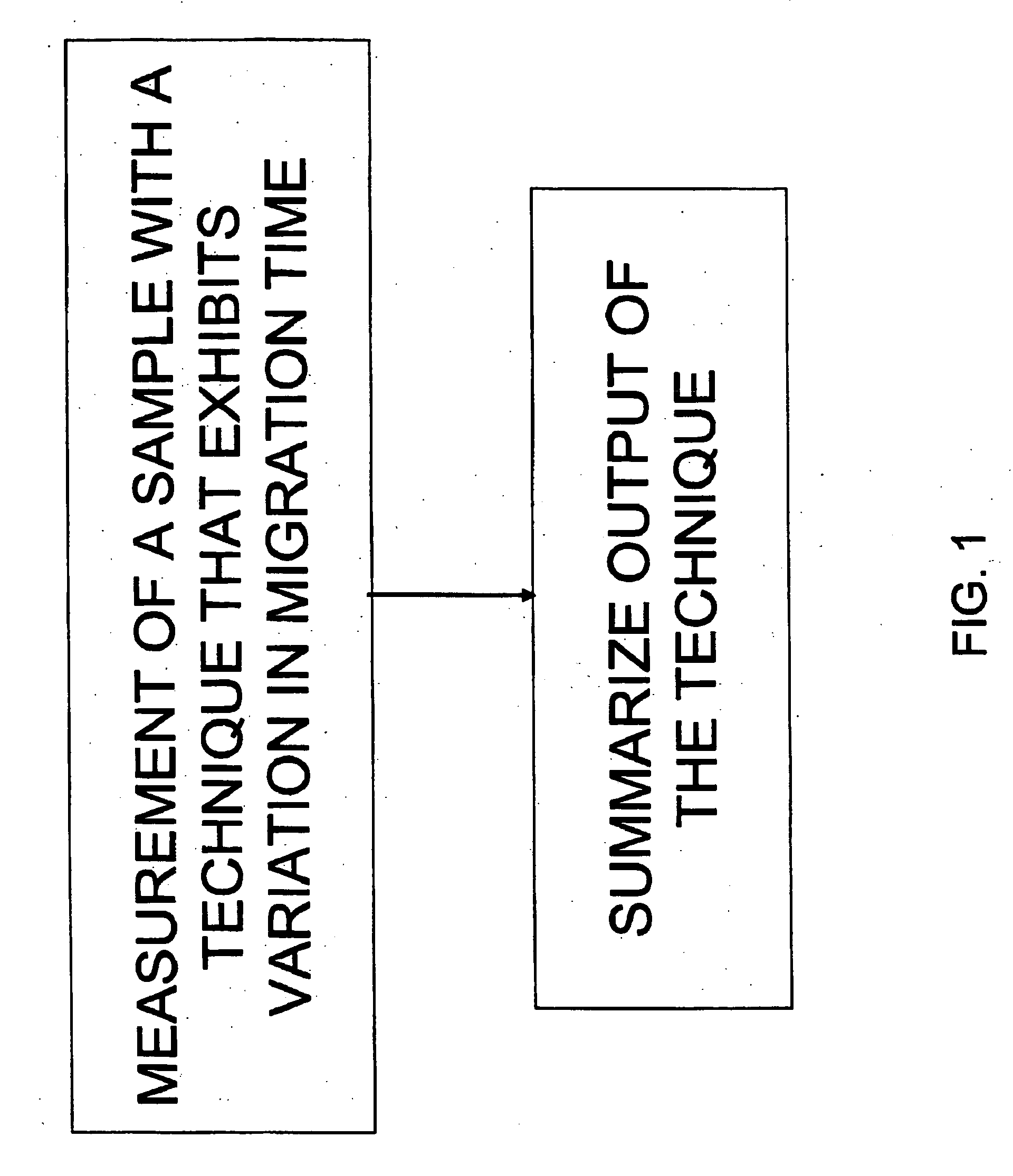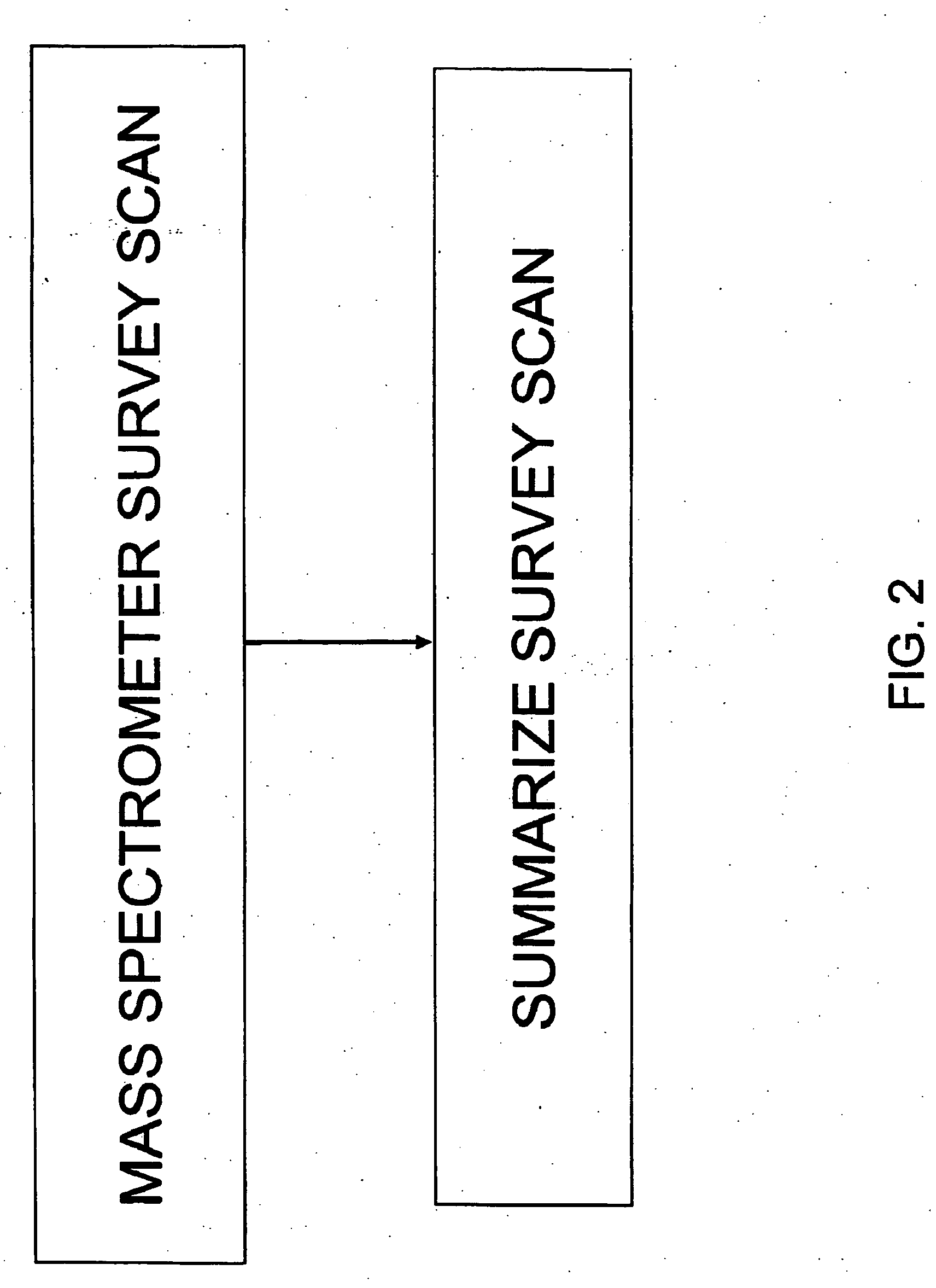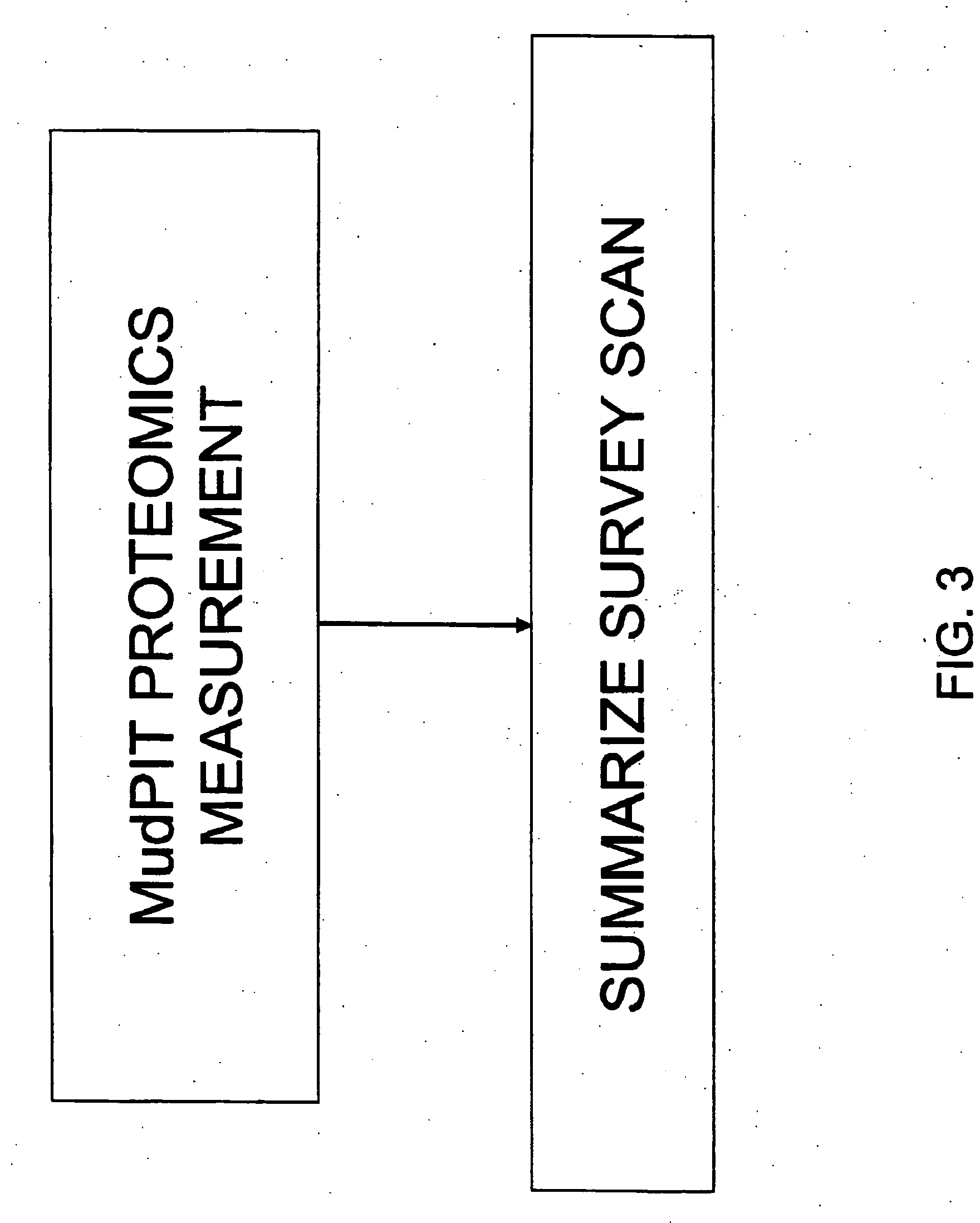Methods of identification of biomarkers with mass spectrometry techniques
a mass spectrometry and biomarker technology, applied in the direction of material analysis, material analysis by using resonance, instruments, etc., can solve the problems of reducing oxygen supply, heart attack, and significant health risk of coronary artery disease (cad), so as to reduce the effect of variation in migration tim
- Summary
- Abstract
- Description
- Claims
- Application Information
AI Technical Summary
Benefits of technology
Problems solved by technology
Method used
Image
Examples
example 1
Proteomics Analysis of HDL Proteins
[0220] Isolation of HDL. Blood anticoagulated with EDTA was collected from healthy adults and patients with clinically and angiographically documented CAD who had fasted overnight. HDL (d=1.063-1.210 g / ml) and HDL3 (d=1.110-1.210 g / ml) were prepared from plasma by sequential ultracentrifugation. The Human Studies Committees at University of Washington School of Medicine and Wake Forest University School of Medicine approved all protocols involving human material.
[0221] Analysis of the HDL proteome. HDL proteins were reduced, alkylated, and digested with trypsin. Desalted peptide digests were subjected to MudPIT with a Finnigan DECA ProteomeX LCQ ion-trap instrument. The MudPIT system used a quaternary HPLC pump interfaced with the mass spectrometer, which in turn was interfaced with a strong cation exchange resin and a reverse-phase column. A fully automated 10-cycle chromatographic run was carried out on each sample. The SEQUEST program was use...
example 2
Predict MI Cases Via PEPI ESI-MS Analysis of HDL Protein Composition
[0227] HDL from 30 MI subjects and 30 control subjects of the Fletcher Challenge study will be analyzed via ESI-MS. We plan to initially study HDL isolated from 2 classes: (i) subjects who suffered from myocardial infarction within the first 3 years of the study; (ii) subjects who remained free of clinically significant cardiovascular disease for the 7 year duration of the study. Subjects within the two classes will be matched for age, gender, and BMI. ESI-MS data will be analyzed using the pattern recognition methods described above and subjects who suffered an MI during the Fletcher Challenge study will be predicted.
[0228] THE FLETCHER CHALLENGE STUDY In 1992-93, the Fletcher Challenge-University of Auckland Heart and Health Study recruited 10,525 participants in New Zealand. These subjects included employees of the Fletcher Challenge Group and residents of Auckland. They completed a medical history questionnai...
example 3
Analysis of HDL Protein Composition
[0234] In one embodiment, two forms of separation (SCX and HPLC) were followed by two levels of mass spectrometry: electrospray ionization mass spectrometry (ESI-MS) or survey scan mass spectrometry and collision-induced dissociation mass spectrometry (CID-MS) or tandem mass spectrometry). The large, complex and selective data sets resulting from this analysis contain many opportunities for data mining. FIGS. 22, 17 and 18 are included to illustrate the size and selectivity of these data sets. FIG. 22 shows a total ion current survey scan chromatogram for one sample. In this figure we see the selective information resulting from only the two separation dimensions is evident. FIG. 22 is a 3D trace showing the total ion current survey scan chromatogram for a typical sample.
[0235] Moving down through the data dimensions FIG. 17 shows the HPLC separation and survey scan mass spectrometric data from a single SCX fraction. Each sample was separated in...
PUM
| Property | Measurement | Unit |
|---|---|---|
| flow rate | aaaaa | aaaaa |
| inner diameter | aaaaa | aaaaa |
| flow rate | aaaaa | aaaaa |
Abstract
Description
Claims
Application Information
 Login to View More
Login to View More - R&D
- Intellectual Property
- Life Sciences
- Materials
- Tech Scout
- Unparalleled Data Quality
- Higher Quality Content
- 60% Fewer Hallucinations
Browse by: Latest US Patents, China's latest patents, Technical Efficacy Thesaurus, Application Domain, Technology Topic, Popular Technical Reports.
© 2025 PatSnap. All rights reserved.Legal|Privacy policy|Modern Slavery Act Transparency Statement|Sitemap|About US| Contact US: help@patsnap.com



